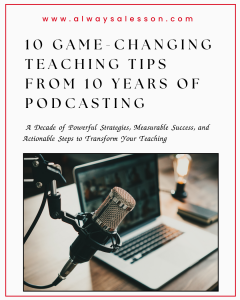Guided Reading
My teaching has evolved over the years, especially in my instructional methods for Literacy. Six years ago when I began teaching, my district adopted a reading program comprised of various stories based on a theme. For example, Unit 1 contained six stories about animals and their habitats. Grouping stories this way helped students understand the unit’s theme through various story lines. The program outlined each lesson and followed the same sequence of instruction for each story. This was comforting as a new teacher. However, I noticed the stories varied in reading level and many were too hard for my students. I wished the stories grew in length and difficulty as the year progressed to match student’s growing reading abilities. Over the years, I grew very bored and tired with the format and limits of the program. Finally, a new principal came into the school and raved about a new approach called, “Guided Reading.” We were still required to utilize the previous reading program purchased and incorporate it as we saw fit. I could not wait to try this new approach after hearing such positive reviews.
For those that may be unfamiliar, Guided Reading is a small group model where students are reading texts on their individual reading levels. The idea is to focus on vocabulary development, fluency, and story structure. As the year progresses, students gain skills and their reading level increases. Charting such progress is helpful to a teacher for planning and data purposes, but students also enjoy having a visual documenting their growth!
My principal encouraged us to set student reading levels using running records. We placed a student’s name and their reading level on an index card. As a grade level, we sat together and spread out the index cards to group students from levels A-Z. (Third grade being levels Q, R, S, T). Once the entire grade level was grouped, we decided which groups would report to which teacher’s room. I ended up with three groups of six. One group sat with me doing the guided reading lesson at the back table. Another group participated in reading activities on the computers, while the other group used tangible manipulatives for word work activities on the front carpet. After 20 minute increments, a bell would sound and my groups would switch. Thus, I would see three groups a day totaling one hour of reading instruction. Then students returned to their original classes. (You do not have to do this as a grade level, but I would have had numerous groups due to my students varied reading levels, and would not be able to meet with all of them on a daily basis).
This method is highly successful. Like I said, it is a visual for students and teachers to watch growth happen. We reassessed reading levels through running records each month and students were constantly moving in and out of groups (you may think that is annoying, but it is quite motivating for students to move when they are ready to move versus waiting until a predetermined time like the end of a quarter). Reading a text on a student’s level not only builds confidence and success, but students gain the foundational skills they may have lost over the years with other reading programs. Many students entered below grade level and were able to catch up to their peers by the end of the year.
This changed my teaching. I never again want to be forced to use some reading curriculum because the district purchased it. I want to utilize a program that is personalized and that creates successful readers.
Does your school use guided reading? If so, how do you implement it?
If not, how do you think you could convince your school to try it?




I have always taught reading using Guided Reading. For a few years, my teaching partner and I would combine our classes and regroup according to levels, but this doesn’t always work. For the last few years I have been grouping the children in my class, usually ending up with 4-5 groups. It is really important to remember that the children can moved levels quicker or slower than others in their groups, so make sure your groups are flexible and change as needed. The other thing I have learnt is to not use round robin reading during guided reading (each child taking turns to read a page), it is all about the teaching of the strategies and giving each child the opportunity to read the book on their own. I ask the children to turn outwards from the group and I will move around and hear each child individually.
Meagan,
Thanks so much for your post! You are absolutely right about having FLEXIBLE groups as students grow at different rates. There has been a lot of talk recently about the round robin reading and its negative effects on student’s reading growth. I have begun having students whisper read as I walk around. I love that you suggest turning students away from the group to read so it is less of a distraction. I will try that with my groups. Great tip!